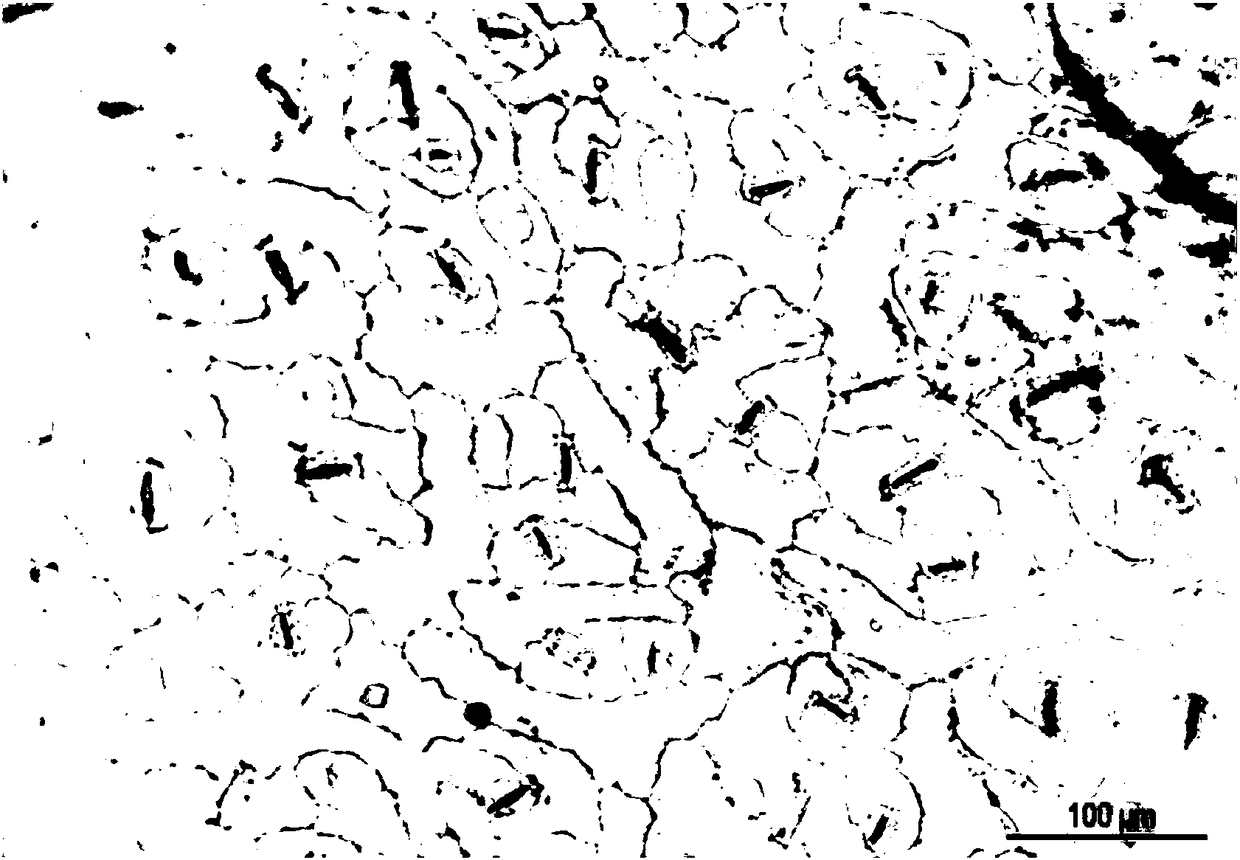Breeding method of tetraploid non-heading Chinese cabbage
A technique for head cabbage and a cultivation method, applied in the field of genetics and breeding, can solve problems such as low water solubility, and achieve the effects of improving stability and inhibiting the formation of spindle filaments
- Summary
- Abstract
- Description
- Claims
- Application Information
AI Technical Summary
Problems solved by technology
Method used
Image
Examples
Embodiment 1
[0025] Step 1: Select 216 plump seeds of non-heading Chinese cabbage harvested in the same year.
[0026] Step 2, the seeds are subjected to germination treatment, and the seeds are dialed into plug trays after being white. When the cotyledons of the seedlings are fully expanded, the mixed aqueous solution of amisulfuryl (concentration of amisulfuryl is 0.06mmol·L -1 , the concentration of Tween 80 is 0.02% v / v, and the concentration of Silwet L-77 is 0.02% v / v) in the morning and evening at the growth point of the seedlings, and the treatment is done 5 times.
[0027] Step 3, after the adult plants are grown, the tetraploid plants are first screened according to the length and width of the 5th to 10th true leaves, the degree of twisting of the leaves, the thickness of the main stem, and the plant height. Through the identification of stomata in anatomy, the tetraploid variation primary plants were determined, and the variation rate reached 4.63%.
[0028] Step 4: Enter the ...
Embodiment 2
[0043] Step 1: Select 212 plump seeds of non-heading Chinese cabbage harvested in the same year.
[0044] Step 2, the seeds are subjected to germination treatment, and the seeds are dialed into plug trays after being white. When the cotyledons of the seedlings are fully unfolded, the mixed aqueous solution of amisulfuryl (the concentration of amisulfuryl is 0.08mmol·L -1 , the concentration of Tween 80 is 0.02% v / v, and the concentration of Silwet L-77 is 0.02% v / v) in the morning and evening at the growth point of the seedlings, and the treatment is done 5 times.
[0045] Step 3, after the adult plants are grown, the tetraploid plants are first screened according to the length and width of the 5th to 10th true leaves, the degree of twisting of the leaves, the thickness of the main stem, and the plant height. Then through the identification of stomata in anatomy, the primary plants for tetraploid variation were determined, and the variation rate reached 9.91%.
[0046] Step ...
Embodiment 3
[0056] Step 1: Select 199 plump seeds of non-heading Chinese cabbage harvested in the same year.
[0057] Step 2, the seeds are subjected to germination treatment, and the seeds are dialed into plug trays after being white. When the cotyledons of the seedlings are fully unfolded, the mixed aqueous solution of amisulfuryl (the concentration of amisulfuryl is 0.1mmol·L -1 , the concentration of Tween 80 is 0.02% v / v, and the concentration of Silwet L-77 is 0.02% v / v) in the morning and evening at the growth point of the seedlings, and the treatment is done 5 times.
[0058] Step 3, after the adult plants are grown, the tetraploid plants are first screened according to the length and width of the 5th to 10th true leaves, the degree of twisting of the leaves, the thickness of the main stem, and the plant height. Through the identification of stomata in anatomy, the tetraploid variation primary plants were determined, and the variation rate reached 8.04%.
[0059] Step 4: Enterin...
PUM
 Login to View More
Login to View More Abstract
Description
Claims
Application Information
 Login to View More
Login to View More - R&D
- Intellectual Property
- Life Sciences
- Materials
- Tech Scout
- Unparalleled Data Quality
- Higher Quality Content
- 60% Fewer Hallucinations
Browse by: Latest US Patents, China's latest patents, Technical Efficacy Thesaurus, Application Domain, Technology Topic, Popular Technical Reports.
© 2025 PatSnap. All rights reserved.Legal|Privacy policy|Modern Slavery Act Transparency Statement|Sitemap|About US| Contact US: help@patsnap.com



